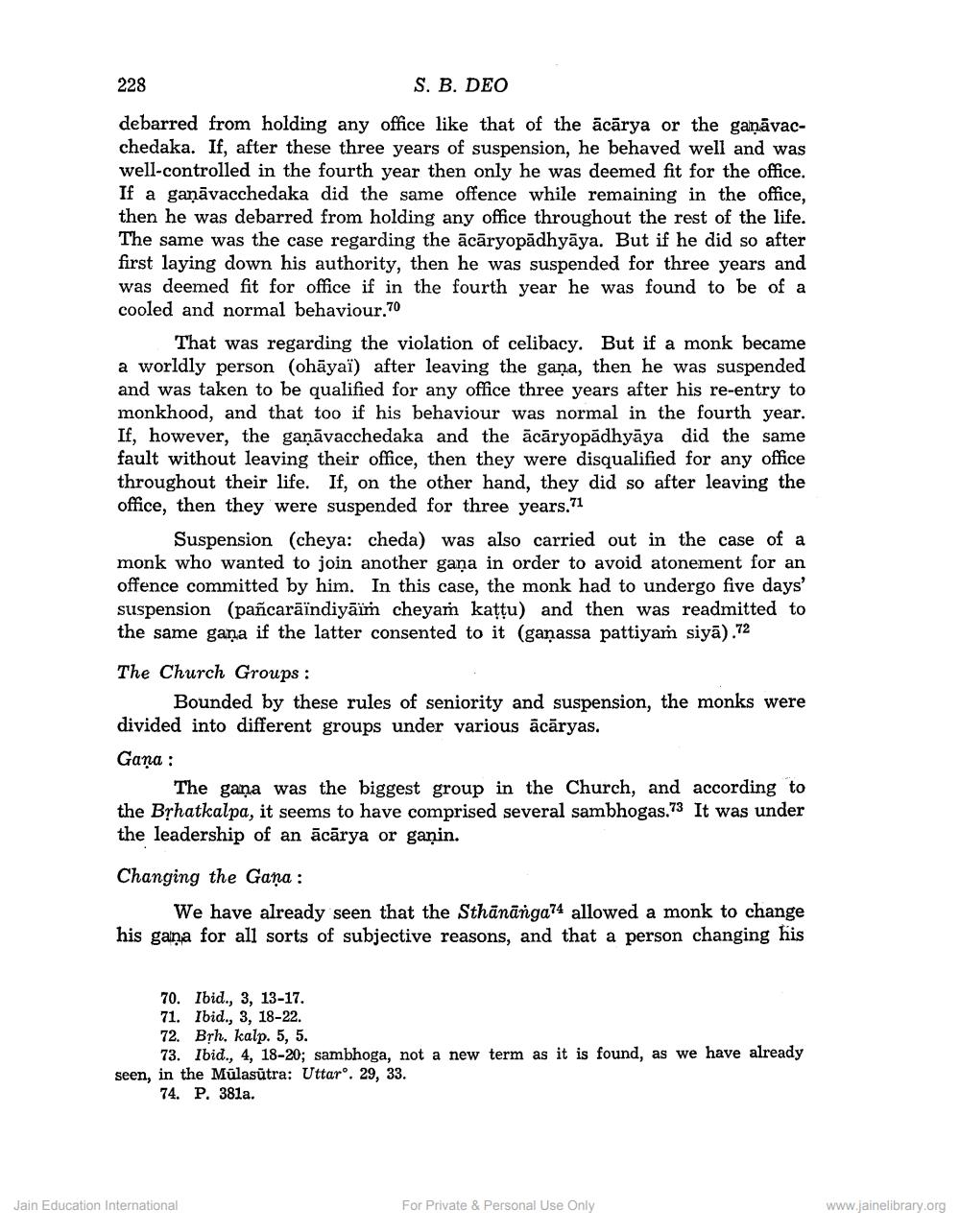________________
228
S. B. DEO debarred from holding any office like that of the ācārya or the gaņāvacchedaka. If, after these three years of suspension, he behaved well and was well-controlled in the fourth year then only he was deemed fit for the office. If a gaṇāvacchedaka did the same offence while remaining in the office, then he was debarred from holding any office throughout the rest of the life. The same was the case regarding the ācāryopādhyāya. But if he did so after first laying down his authority, then he was suspended for three years and was deemed fit for office if in the fourth year he was found to be of a cooled and normal behaviour.70
That was regarding the violation of celibacy. But if a monk became a worldly person (ohāyar) after leaving the gana, then he was suspended and was taken to be qualified for any office three years after his re-entry to monkhood, and that too if his behaviour was normal in the fourth year. If, however, the gaṇāvacchedaka and the ācāryopādhyāya did the same fault without leaving their office, then they were disqualified for any office throughout their life. If, on the other hand, they did so after leaving the office, then they were suspended for three years.71
Suspension (cheya: cheda) was also carried out in the case of a monk who wanted to join another gana in order to avoid atonement for an offence committed by him. In this case, the monk had to undergo five days' suspension (pañcarāïndiyāim cheyam kattu) and then was readmitted to the same gana if the latter consented to it (ganassa pattiyam siyā).72
The Church Groups :
Bounded by these rules of seniority and suspension, the monks were divided into different groups under various ācāryas. Gana :
The gana was the biggest group in the Church, and according to the Byhatkalpa, it seems to have comprised several sambhogas.73 It was under the leadership of an ācārya or ganin.
Changing the Gaña:
We have already seen that the Sthānānga74 allowed a monk to change his gana for all sorts of subjective reasons, and that a person changing his
70. Ibid., 3, 13-17. 71. Ibid., 3, 18-22. 72. Brh, kalp. 5, 5.
73. Ibid., 4, 18-20; sambhoga, not a new term as it is found, as we have already seen, in the Mülasūtra: Uttaro. 29, 33.
74. P. 381a.
Jain Education International
For Private & Personal Use Only
www.jainelibrary.org




